Leica 35mm Summicron-M f/2.0 ASPH Review:
The 35mm lens is one of the most common focal lengths for Leica M shooters because the angle of view makes it very versatile and perfect to shoot a number of different subjects, such as, but not limited to environmental portraiture, street, landscape, and candid work. Because this focal length is so popular, Leica currently makes three different 35mm lenses for the M system to suit a variety of needs, tastes, and budgets. One of these lenses is the Leica 35mm Summicron-M f/2.0 ASPH, a lens whose lineage has reached legendary status, and considered by many as the quintessential lens for the M.
Leica 35mm Summicron-M f/2.0 ASPH Build Quality:
Like other M lenses, one of the characteristics that makes the 35mm Summicron-M f/2.0 ASPH such an excellent lens in my mind is its build quality and mechanics. To me, Leica lenses feel like they are built to last several generations. I still own my 35mm Summicron IV, and it was originally purchased in the early 80’s by my father. It has formed a nice patina over the years but has never needed service, and it not only works on my newest M but in my opinion, it is still an excellent performer when compared to today’s optics. Plus, thanks to the variety of adapters on the market these days, many Leica lenses can be used on cameras from several different manufacturers, which only increases the viability and worth of these lenses.
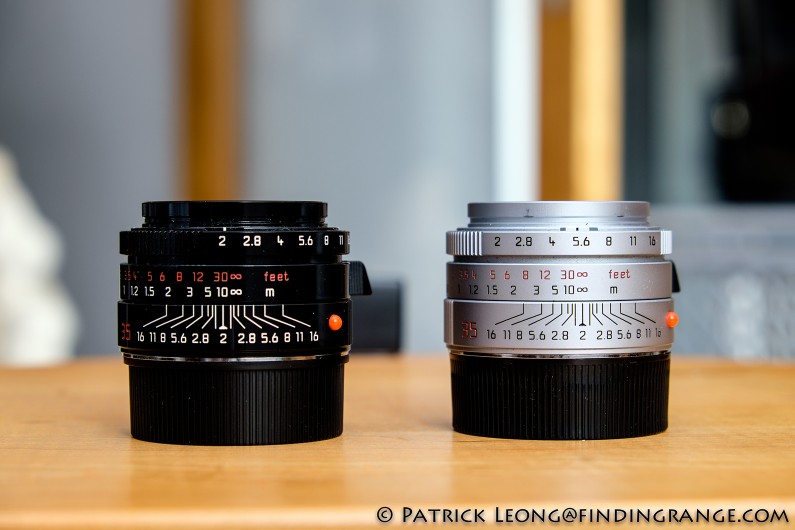
↑ Examples of the black paint and silver chrome 35mm Summicron ASPH without lens hood.
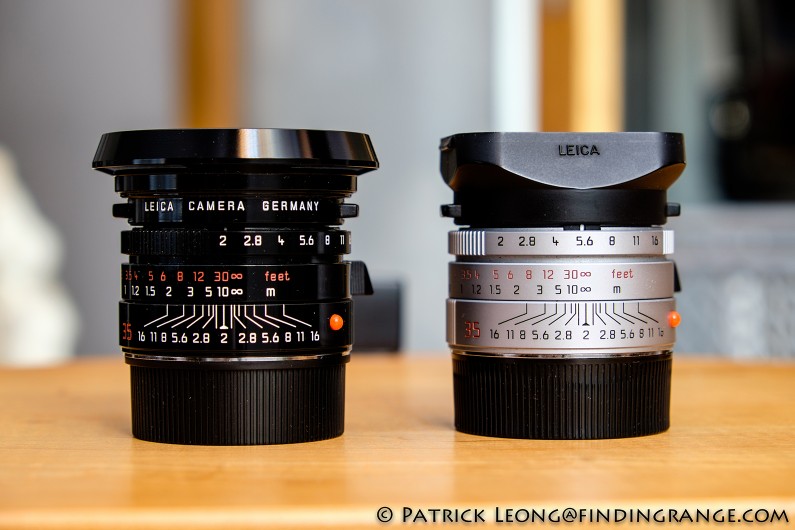
↑ Examples of the black paint and silver chrome 35mm Summicron ASPH with their lens hoods.
The 35mm Summicron-M f/2.0 ASPH is a compact lens but don’t let the size fool you; everything about this lens screams high quality and precision craftsmanship to the highest order. It’s a very solid lens with a nice, dense feel. In fact, the solidity makes it feel like it was made out of a solid block of metal. Like other M lenses, all markings on the Summicron are engraved and filled with paint. The aperture ring has absolutely no play and clicks solidly in half stops. There’s a tab to adjust focus, which is ultra smooth in operation. In fact, this lens has one of the smoothest focusing rings I’ve ever used beating in smoothness pretty much every other lens that I currently own.

↑ Top view of the M 240 with the 35mm Summicron ASPH without hood to give you a feel of the compactness of the lens.
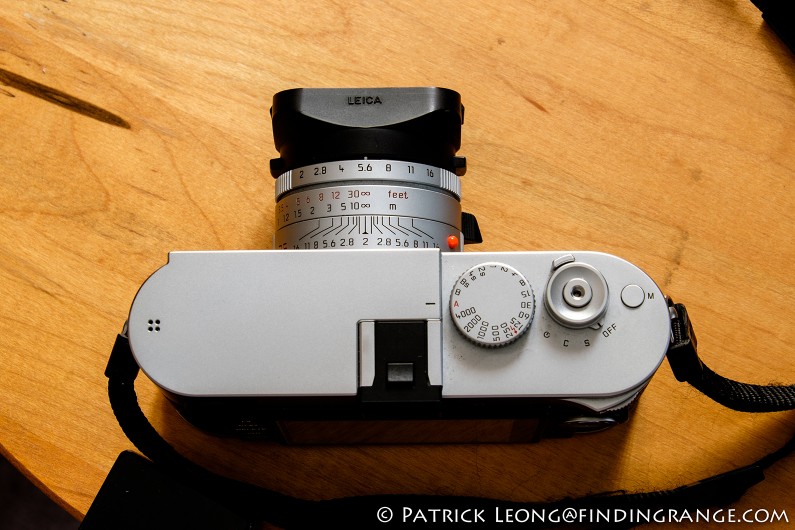
↑ Basically the same shot as above but with the lens hood on.
The standard variants of the 35mm Summicron ASPH include a black anodized version, and a heavier chrome version where the barrel is made out of brass. The weight of the black version is 255 g, while the silver chrome version weighs 340 g. Generally, if there’s a choice, I prefer buying the brass version of Leica lenses because they feel special to me; there’s a slightly heftier and denser feel to them. Plus, the silver chrome finish is impressive. Some people don’t like the extra weight but it’s not such a huge difference that I feel burdened to carry it around all day.
Leica 35mm Summicron-M f/2.0 ASPH Black Paint Millennium Version:
I own the chrome version of this lens but later, I ended up purchasing the limited edition black paint version, which came out to compliment my M6 TTL Millennium. At the time that I paid for it, it cost just a little bit more than the standard variant, so it was worth it to me, especially since I’m a big fan of the glossy black paint finished lenses Leica sometimes introduces as special editions. If I remember correctly, there were only two lenses total introduced with the Millennium M6: the 35mm Summicron ASPH and a 50mm Summilux pre-ASPH. If you wanted both lenses and the camera, you had to purchase them separately because they did not come as a set but you could still get the lenses and body with matching serial numbers. For instance, my 35mm Summicron’s serial number matches my M6 TTL Millennium’s.
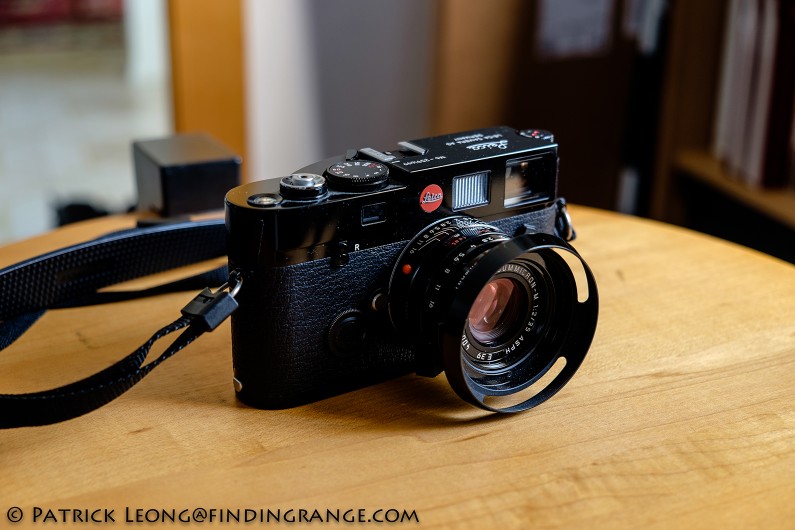
↑ My Leica M6 TTL Millennium with the 35mm Summicron-M ASPH Black Paint.
Like the silver chrome version, the black paint version is also made out of brass. Surprisingly, while both are technically identical except for finish, the black paint version feels slightly better assembled. I’ve been using both of these lenses for years, and I found the focus ring is even smoother on the black paint version making it actually the smoothest focusing lens that I own. The aperture ring clicks solidly in place like the silver version but it feels slightly damped to give it a nice smooth, high end feel.
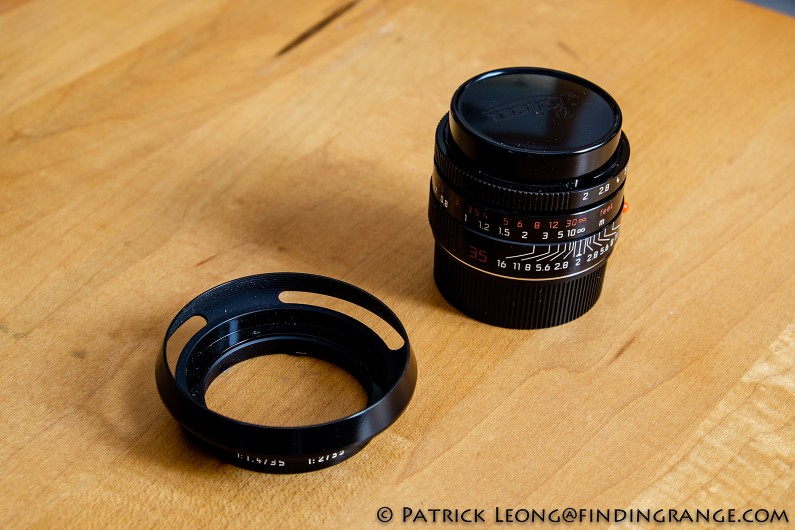
↑ 35mm Summicron ASPH black paint with cap and lens hood.
Leica 35mm Summicron-M f/2.0 ASPH Black Paint vs. Standard Lens Hoods:
All the variants of the 35mm Summicron ASPH come with lens hoods that clip onto the front of the lens. The standard lenses come with a rectangular shaped plastic hood while the black paint version comes with a classic “vented” round metal hood. Like the lens, the hood has been painted glossy black. I believe the hood is made out of brass because some of the paint on mine has worn over time, and I can see the bronze color glow.
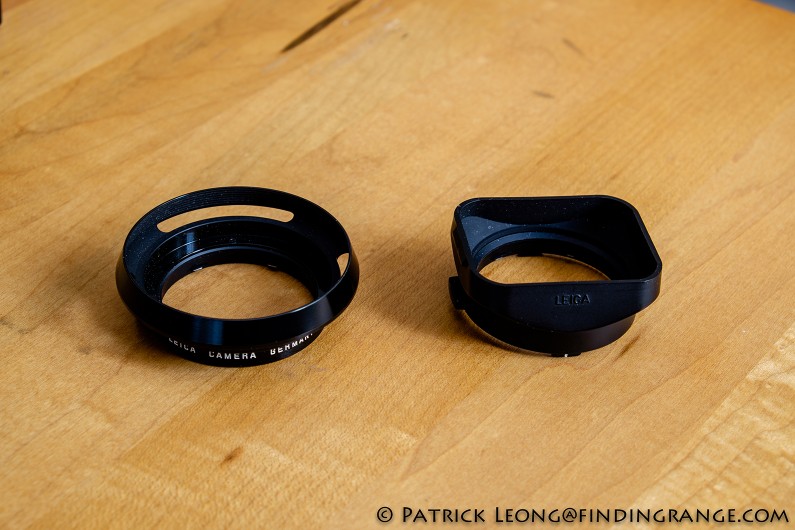
↑ Lens hoods compared: the one that came with the black paint version of the 35mm Summicron ASPH and the one from the standard variant.
While the vented hood is rarer and more people seem to like it’s appearance over the standard hood (even I prefer its appearance over the standard version), I sometimes prefer the rectangular hood because I find it a little more useful and practical. With the rectangular hood, I can just leave it on the lens permanently because the rubber lens cap that’s supplied with it actually clips right onto the front of the hood. With the round metal hood, if I want to put the lens cap back on, I have to first remove the hood because the cap only fits on the lens. Obviously, for those who don’t use lens caps or even hoods and use maybe filters instead to protect their lens, this may not be an issue.
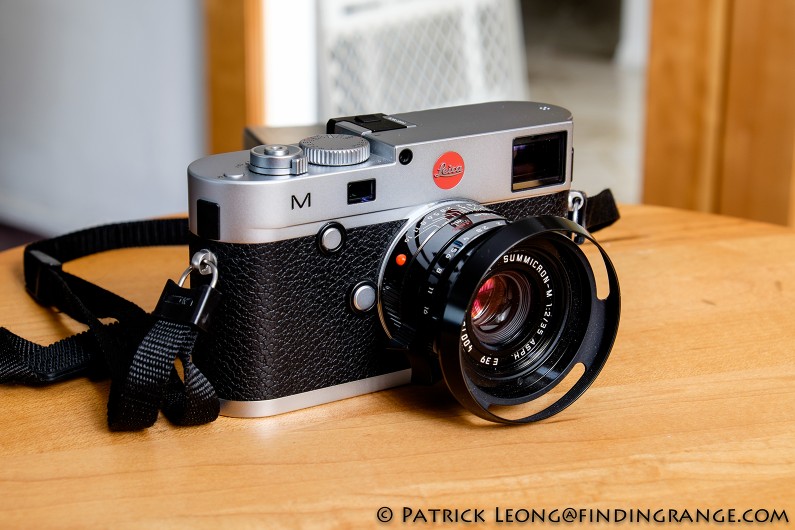
↑ Leica M Typ 240 with the 35mm Summicron ASPH black paint edition.
But another great thing about the rectangular hood is it’s smaller, which makes the lens feel slightly more compact. It blocks less of the viewfinder than the vented hood, which is why it does not need venting like the metal round hood. Some might take issue with the fact that it’s made out of plastic but I’ve been using one of these plastic hoods since my Summicron Version IV, and I’ve never experience ANY issues with it. It’s light, it’s dependable, it’s compact, it’s convenient, and it does it’s job. It’s not made out of cheap plastic, so it won’t break easily. With the square rectangular hood on the lens, the camera is always ready to shoot. What more could anyone ask for?
Leica 35mm Summicron-M f/2.0 ASPH Image Quality:
Like the build quality, the image quality from this lens is superb. I truly believe that this lens is up there with the best of them. If you don’t need the F1.4 aperture of the Summilux, in my opinion, you won’t ever have to replace this lens. Ever. To me, it’s that good. The truth is, there’s not much to say other than I’ve been shooting with the 35mm Summicron ASPH for years on film and digital bodies, and to this day I am still thoroughly impressed and amazed by the image quality that it produces. This is an exceptional lens that produces beautifully constrasty, full, and rich images. Distortion is so low, especially for a wide angle that there’s really nothing to worry about.

↑ I remember this day being so hot and humid, it sure felt like Hell. Taken with the Leica M9

↑ Walking around Tribeca: Leica M 240 and 35mm Cron ASPH.

↑ Statue of Liberty taken with the M9.
Furthermore, the 35mm Summicron-M f/2.0 ASPH is insanely sharp, and it’s actually one of the sharpest lenses that I own. It captures so much detail that it’s downright scary at times. In fact, I find this lens so wickedly sharp throughout the aperture range that you don’t have to worry about what F stop you’re shooting at because you’ll always get superb results. This is a very versatile and useable lens. Wide open or stopped down, it does not matter; this lens will perform significantly well. As I said before, I’ve own this lens for years, and to this day, I am still so impressed by what it can deliver in terms of image quality, especially on the newer M cameras like the M 240, which I find it matches particularly well with.
↑ Spring time in Central Park shot with the M 240.
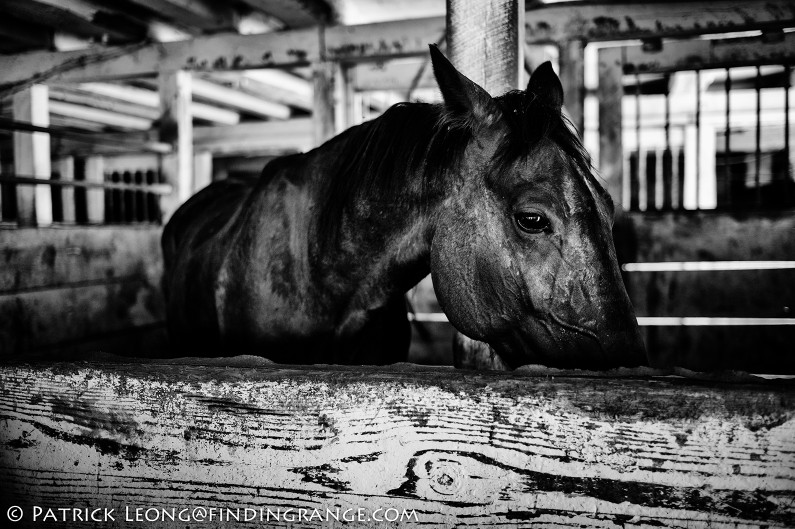
↑ Taken with the M9.
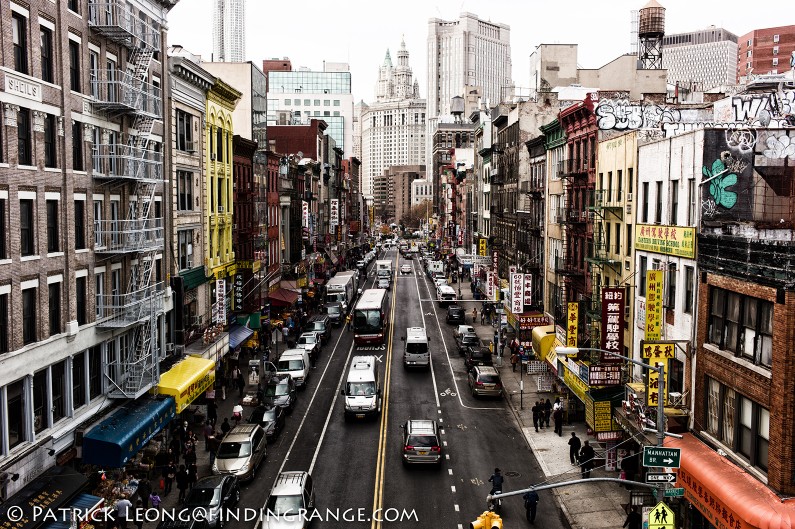
↑ Chinatown with the M9.
But it’s not just sharpness that makes me love this little lens so much. The 35mm Summicron ASPH has character and it produces images that look very three dimensional. There’s this “pop” and clarity to the photos that make things look lifelike. Photos are so vivid. When I’m looking at a photo of mine, I almost feel like I’m in the scene. In other words, things look organic; they look real. Even at a smaller aperture like F5.6, the subject simply comes right out of the page and grabs you, and this is not something that you really have to try hard to see.

↑ NY Auto Show shot with the M 240.
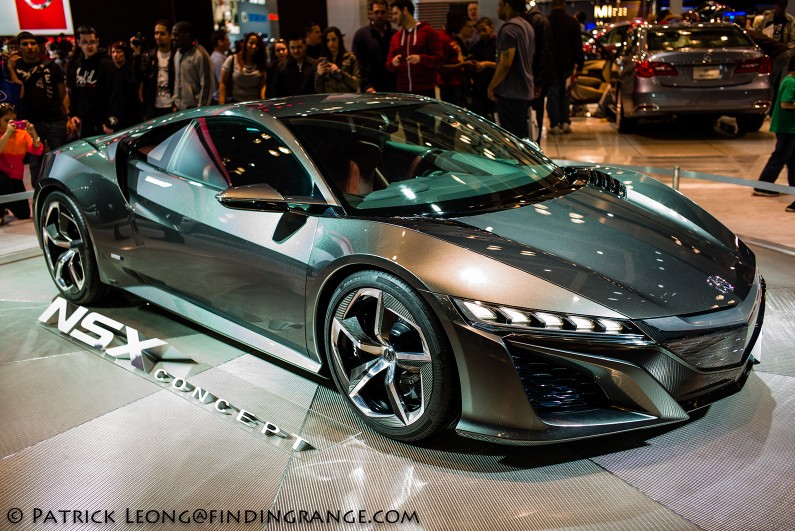
↑ A Shot of the Acura NSX taken with the M 240.
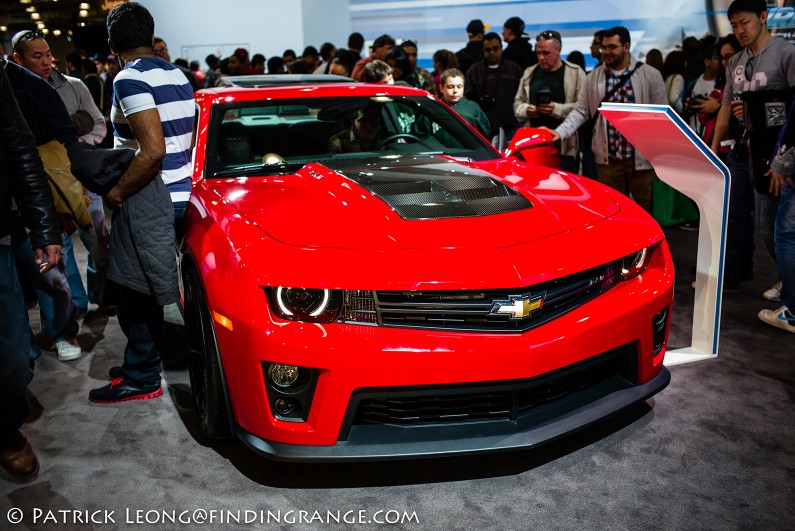
↑ The Camaro ZL1 taken with the M 240.
The bottom line is I could sit here and nitpick the 35mm Summicron-M f/2.0 ASPH to death but the truth is, in my opinion, this lens just delivers the goods in every way. I just love how this lens performs. It never disappoints or makes me wish I had more.
↑ Here’s some photos from the 2015 NY Auto Show. Photos are so clear and vivid with this lens. Look at how the car just pops out of the page. All these photos taken at the 2015 NY Auto Show were taken at F2.0 and notice how insanely sharp this lens is wide open.
↑ The red in this photo just pops out of the page.
↑ One of my favorite cars ever.
Leica 35mm Summicron-M f/2.0 ASPH Bokeh:
As for the bokeh, I found it to be quite pleasing for the most part. It’s obviously not going have the same dreamy effect as say a 50mm Summilux but it’s still very smooth and inviting. It can still produce a very nice “painting effect” in the right conditions and situations. Bokeh is a personal preference, so others may disagree but as far as I’m concerned, the background melts away nicely when I’m shooting at F2.0. In fact, I find the bokeh from the ASPH version to look nicer and smoother than the older Summicron Version 4, which I still own.
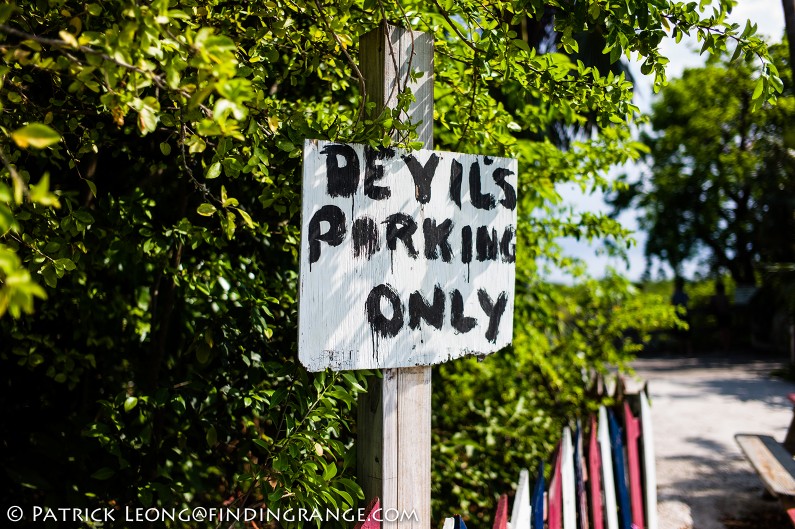
↑ This was taken with the M9 and Summicron combo.
Leica 35mm Summicron-M f/2.0 ASPH Ergonomics:
Excellent build and image quality are generally what you need to make a great lens but there is one huge selling point that the Summicron has in combination with these two characteristics that make it in my opinion, a masterpiece of a lens regardless of manufacturer: the ergonomics are just about perfect. It balances perfectly on an M body, it’s just the right weight, the hood works great yet it’s small, and the focus tab feels completely natural to operate. Focusing is quick too because the focus throw is short, plus with the focus tab and a little practice, you’ll be able to preset focus based on feel alone. This lens’ operations are a pure pleasure to use. The form and functions will become second nature in no time.
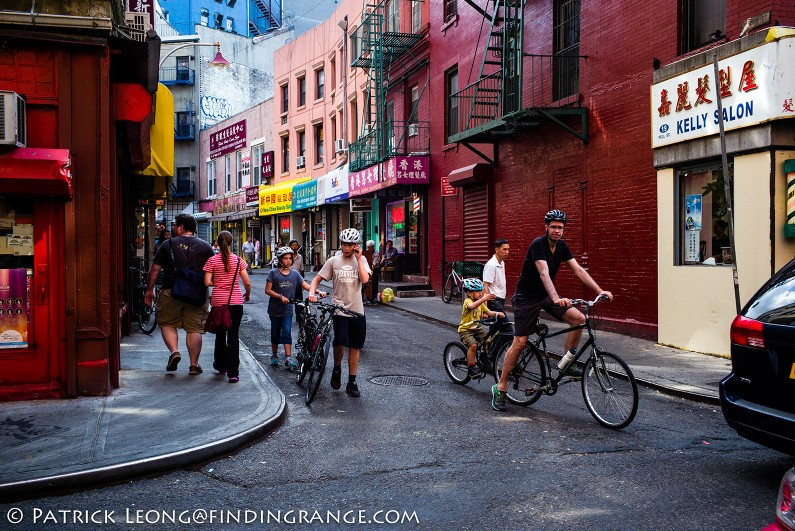
↑ This was taken with the M 240.

↑ Another photo courtesy of the M 240.
A compact design such as this not only makes it easier for a photographer to lug it around all day, it makes the person more discreet. With the Summicron mounted on my camera body, I not only get excellent image quality, I sometimes feel like I’m shooting with a large point and shoot rather than a full frame digital body. I guess that’s probably one of the best compliments I can give any lens. Also, keep in mind that at F2.0, this lens still has high light gathering capabilities for shooting at night, yet it only uses a 39mm filter.
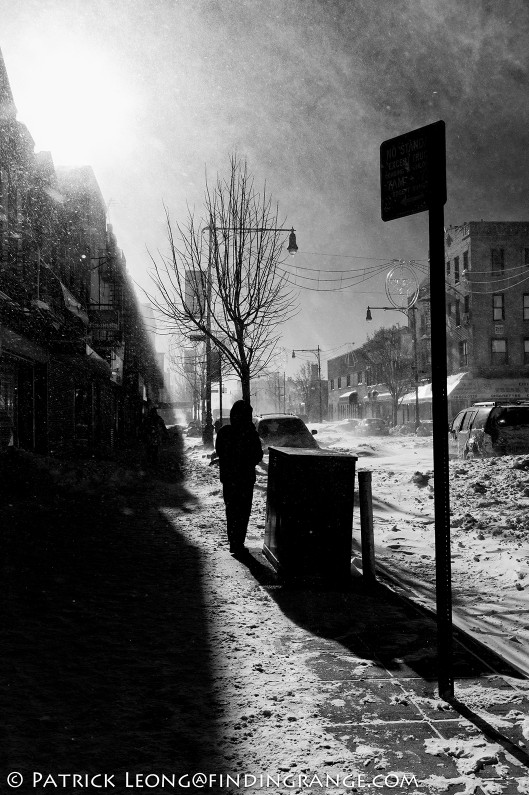
↑ This was the biggest storm that I’ve ever experienced in New York City. Cars and buses were abandoned in the middle of the streets for a few days. This was taken with the M9.

↑ Who doesn’t like freshly fried donuts ;)? M9 and 35mm Summicron ASPH combo.
Not only is the lens’ size beneficial, since it is a 35mm, many shooters will find it very natural to use. This only adds to its flexibility and adaptability. You can shoot landscape, portrait, street, you name it. That’s why this lens also makes a great “first lens” for a photographer who is new to the M system. Because it’s a wide angle view, you can get in real close for an “in the action” shot but since it’s not so wide, it does not have the severe perspective error usually associated with ultra wides.
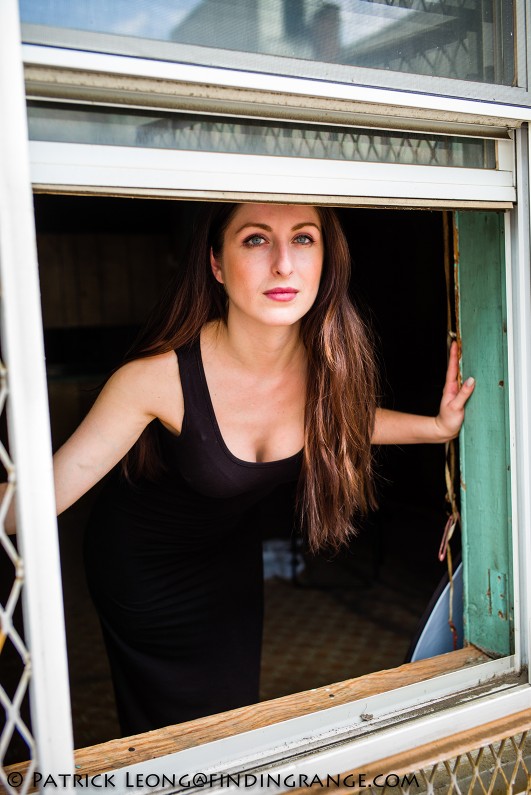
↑ M240 and 35mm Cron ASPH combo.
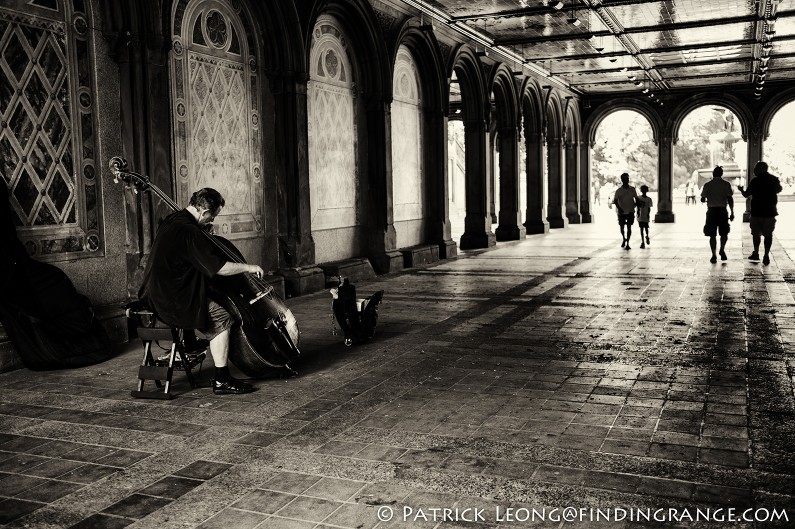
↑ M9/35mm Summicron ASPH combo.
This is a lens that is design to go everywhere with you, and you’ll likely take it everywhere because of its compact nature and versatility. My preferred focal length is a 50mm although with my recent trend, it seems I’ve been gravitating more towards an 18mm as my focal length of choice ;). But when I’m in new areas I’ve never photographed before, on vacation or if I need ultimate versatility because I’m not sure what I’m really going to run into photographic wise, my 35mm Summicron ASPH is mounted on my camera probably 80% of the time. I know I’ll get the great image quality, it’s easy to focus, it’s compact, so I don’t feel like I’m lugging a ton of gear with me, and it has the flexibility to shoot a variety of subjects in many different environments. In fact, it’s so well at adapting to different situations, many shooters are perfectly content with using just the 35mm Summicron as a daily lens in a one lens system.
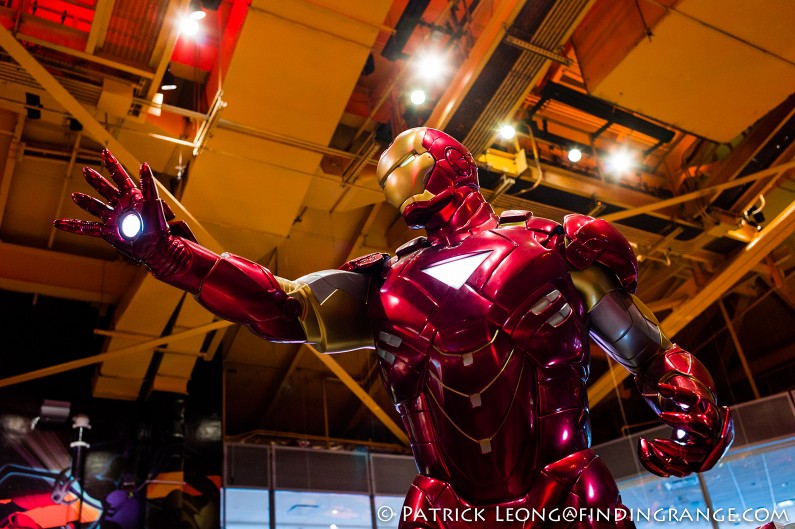
↑ This was taken with the M9.
Minor Issues With The 35mm Summicron-M f/2.0 ASPH:
As you can tell, I am a huge fan of the Summicron but like everything else out there, it’s not perfect (even though I don’t see much wrong with it either). As I mentioned before, there is a rubber lens cap that goes over the standard hood but while it’s actually a great idea, I wished the cap clipped on better. If you lose one, it will cost you over $30 to replace it each time. Luckily, I’ve never lost one but I know someone who owns this lens as well, and he has lost a couple already. I hope Leica will include a lens hood with similar characteristics to say the new hoods that are included with lenses like the 18mm Super Elmar in the next generation Cron. The 18mm has a metal lens hood with a lens cap that slides over it. This is both very secure and quick to remove. The lens hood for the 18mm is also designed to stay on the lens better because it actually screws into the front of the lens.
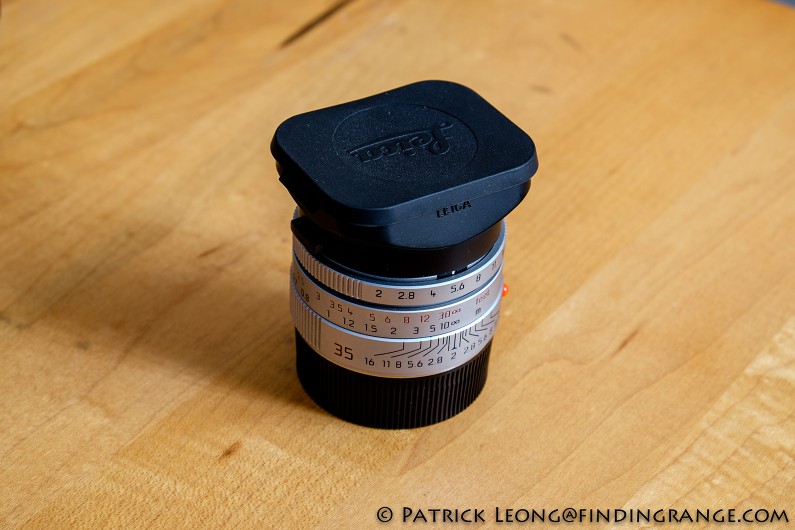
↑ The rubber lens cap clips right onto the front of the standard lens hood making it very convenient and quick to remove.
Another issue I have with this lens isn’t really a problem but more about my own preferences and wishes. I find the 35mm Summicron-M f/2.0 ASPH is better optically than my previous Version 4 Summicron but in my opinion, it would’ve been nice if Leica could’ve kept the older Cron’s slightly more compact design. But this isn’t such a big deal since the ASPH version is only a little bigger but in my opinion, produces better image quality. The ASPH version is still extremely compact as you can see in the photos, and it is still one of the best lenses out there ergonomically; it’s still currently one of Leica’s most compact lenses.
35mm Summicron-M f/2.0 ASPH Verdict:
Overall, the 35mm Summicron ASPH is one of those lenses in the Leica M lineup that I believe every M shooter should try at least once. It’s not one particular trait that makes it such a great lens. It’s a combination of all its traits, such as, excellent build, ease of use, exceptional image quality, and a fast F2.0 aperture that makes it one of my favorites. Best of all, these traits are stuffed into one of the most compact 35mm lenses out there. All these characteristics work together to make this lens hugely versatile and dependable for capturing a variety of subjects in many different conditions. This is a great first lens to purchase if you’re new to the M system but it’s also a lens that you can use for a lifetime and never get tired of. In fact, many photographers still continue to use older generation 35mm Summicron lenses. As I mentioned earlier, I still own my 35mm Summicron Version 4 or as some refer to it as the “Bokeh King”. It was originally my dad’s, and I believe he purchased it in the early 1980’s and now I’m using it. I’m sure it will survive and be used by my children in the future. Yes, the 35mm Summicron-M f/2.0 ASPH is expensive but you’ll never feel like you’ll need any more.
That’s it for my review. I hope you enjoyed it. If you’re considering buying the 35mm Summicron ASPH, and my review helped you decide, please consider supporting this site by purchasing from one of the links below. Thank you for your support!
35mm Summicron ASPH from Amazon

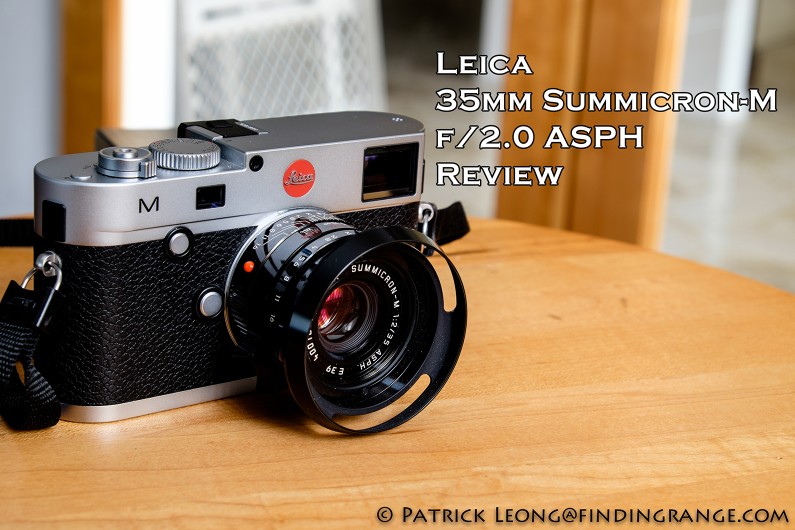

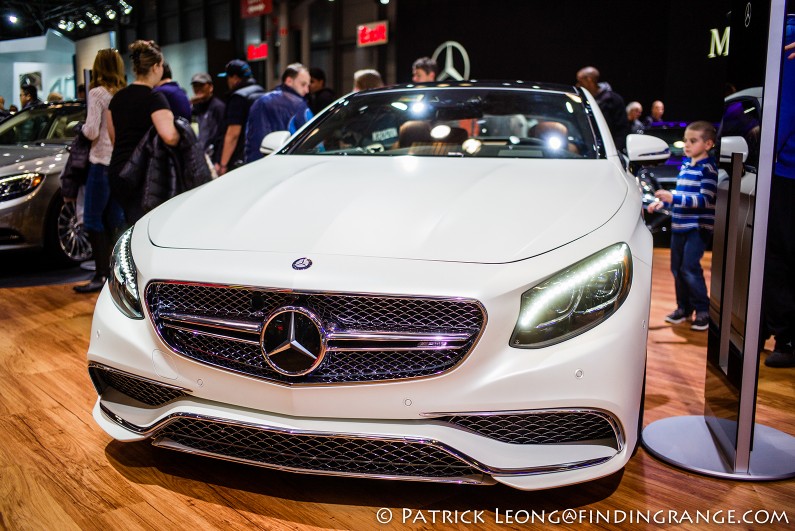
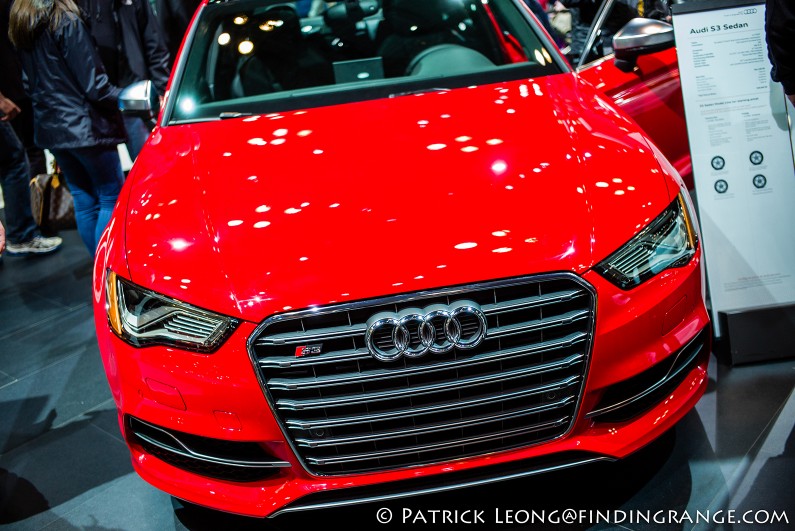
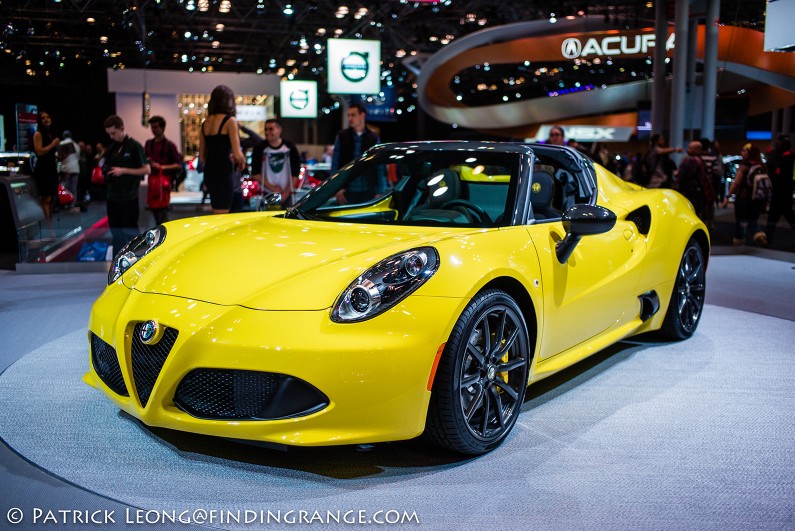
Fantastic and thorough review! I didn’t know that the black paint edition of this lens also had the solid heavy brass barrel. And it looks stunning with the classic paint, too.
I agree with you on all counts about the rectangular, small, plastic hood. Functionally, it’s superior to the old school metal, round, vented hood. The rectangular plastic hood is the one that I used on my Canadian 35mm Summicron pre-ASPH and it made for a small, handy package on an M body.
But purely from a shallow, cosmetic POV, I love the look of the metal vented round hood on that black paint version 🙂
One question Patrick: I realize the current Leica lenses are superior to their Mandler-era predecessors. So between the older, non-ASPH M lenses and the ASPH ones like the 35mm Summicron you review here – is the difference most noticeable on the Leica M 240? Is it less noticeable on the older M9, or when shooting film?
Thanks, Marco!
I definitely agree with you about the round metal hood :). It looks nice, especially in the black paint. I think Leica made a silver one once as well but unfortunately, these round metal hoods are both rare, and cost a small fortune to get.
As for your question: Let me first state that I am definitely impressed by how this lens performs on the M9. I actually used my Version IV most during the first year I had my M9, so I remember being quite pleasantly surprised by the difference when I started using the ASPH version. Now that I am using the M 240, surprisingly, I am even more impressed. It’s the colors and the 3D effect that really make me love using this lens on the M 240. There is just so much “pop” in the photos. I hope no one misunderstands me because I loved using my M9. So, to answer your question, I find the differences more noticeable on the M 240. Great question btw.
All the best!
Patrick
Nice review!
I absolutely agree with you on the lens. It was the first lens I purchased for my Leica MP. For half a year it was the only lens I had for my Leica, but it never felt only having this lens would restrict my photography.
As you have mentioned in your review, the front plastic cap falls of easily, I already lost it once.
Another issue I sometimes have with the lens is some weird flares (I use an UV filter for lens protection), but only if I shoot directly in the sun, have you noticed this too?
PS: I am on vacation in New York this December, do have any insider tips for must see places?
Thanks!
Greetings from Austria
Fabian
Hi Fabian!
It’s great hearing from you again, and thanks for taking the time to read it!
Yes, once in a while, I’ve experience flare from this lens as well. I still have my chrome and black paint version, so one has a filter and the other doesn’t. I’ve used both for years that way, and haven’t noticed any difference between the two.
It’s great that you’re visiting New York in December. because it is beautiful at that time. I am more than happy to give you any tips for must see places! Send me an email through my “Contact Me” tab on my site and I will send you a detailed response about the places I usually like to go to, especially during the holidays! I look forward to hearing from you!
Best regards,
Patrick
Hello Patrick,
Not certain which I enjoyed more – your very complete & informative discussion of the two different versions of this 35mm lens, or the pictures that were taken by you with them. You are certainly right about the pop of the colors & their intensity. The first one in your series (Devil’s Guestshop) & the car show images really demonstrate what you were saying – & I felt like I was in the one taken of Central Park. What surprised me tho was the complete shift in the Chinatown image – almost a sepia like quality with transitions between color & B&W; really interesting to see. And the B&W images from the 35 are equally impressive, particularly the one of the Statue of Liberty; the somber mood & surrounding dark weather were captured perfectly.
The hood vs. no hood, round or square, with your answers to the questions raised above hit home with me. On my Fuji X-E2 with the XF35mm lens, it has a square metal one that comes with it. I have used it almost always until just recently when I have been experimenting a bit without it (just a clear filter to protect the glass). So far I haven’t had any flare or other problems, so I guess it is just a matter of convenience & how much other stuff is in the bag.
But many thanks again for this most comprehensive review – one of the best I have read of any Leica lens. Cheers,
Jed
Hi Jed,
Thank you very much for your kind words! It means a great deal to me that you enjoyed the photos, especially since I’m more of either a 50mm or a wider than 35mm kind of user :). I definitely appreciate you taking the time to read my review as well.
Actually, I had a similar experience in regards to the X-E2 and XF 35mm lens as well. I tried using the lens without a hood, and I also had no issues. Like you, I use a filter for protection. I do the same thing with my Zeiss Touit 12mm as well. I find the petal shaped lens hood is just too big to carry around all day, especially since most of my bags aren’t that big in the first place :). Plus, with the petal shaped hood, the lens just feels and looks huge on my X-E2. The Fuji lenses are excellent! They have not really released anything bad but it would be great if they maybe designed the lens hoods a little bit better to match the compact designs of the X Series bodies.
Again, thank you for taking the time to read my review! It’s always great to hear from you here!
Best regards,
Patrick
hallo patrick,
i enjoyed your review about the Summicron 35. as always very informative. it is not a new lens for the m system but definetly one that i look out for, so i was very interested what you think about it. if it is good enough for you, it shure will be for me. but then again there is zeiss announcing their new 35 biogon zm 1.4 which will sell for even less than this leica lens. i already had it on my M9 at photokina and i was very impressed. i hope to get some playtime with this lens any time soon. it is not as compact as the summicron and even slightly larger than the 35 Summilux but only by a small margin.
Hi Elderin,
Thank you for taking the time to read my review! Yes, it is an older lens but definitely one of Leica’s best in my opinion. I heard about the Zeiss 35mm F1.4 and it definitely sounds interesting. If you do get some play time with it, please let me know what you think of it! I’ll see if I can get a copy in the future to test it out as well. It should be very interesting. I definitely enjoy using some of those lenses made by Zeiss,
Best regards,
Patrick
To Patrick, Fabian & Jed;
I’m a big advocate of using a hood but without a filter. You stack the optical odds in your favour of protecting your front element from stray light (light that doesn’t contribute to image creation), and therefore, reduce chance of flare, veiling and lost of contrast.
A UV filter without the use of the hood adds an additional piece of glass, which means two surfaces (outer and inner). Chances of getting hit with flare, veiling or lowered contrast are now increased, as opposed to its lowered chances with the use of the hood.
With all of that said – as Patrick mentioned, one can still get flare, even with the factory hood installed, especially if it’s for a wide angle lens (hoods optimized for wide angles are, by necessity, shallower than standard to tele, and are more limited in their ability to defend against stray light). And sometimes, having a compact lens without the hood is a bigger priority than avoiding flare. Also, for severe weather or being near salt water, its smarter to use a UV, rather than not.
Hi elderin;
I’ve been sharing some Leica M3 pics using B&W film, with Patrick recently. The lens I chose is a new Zeiss ZM Biogon 28mm. When I used Leica M bodies in the past, I always stuck to Leica-made lenses. But this Zeiss Biogon 28mm is astonishing (have been using it since last summer) . It’s rendering in B&W is superb, and it has that typical Zeiss higher than normal, micro contrast which is a look I like. Apparently, it produces warmer, more vibrant colours too, but I can’t confirm that, because I use my Leica M3 only with B&W film these days, haha!
Build quality is superb (although not quite at the same level as Patrick’s Summicron ASPH lenses). The focusing handle is smaller than Leica’s, but solid (metal and machined with the focusing ring, not added on).
All of the Zeiss ZM lenses to date are sold without their metal hoods. One has to buy those as an additional accessory. I would urge you to do so. They are excellent hoods, with a simple and secure bayonet action. They’re vented to minimize frame line blockage and as discussed above, will optimize contrast, your optical performance and provide some physical protection.
And finally – The Zeiss ZM line is world class, yet provide a fantastic value with prices much lower than the awesome Leica M lenses of today.
Nice Lens, The photo look pop and sharp,the colour are very vibrant too and the girl in black,she is really hot :)….awesome awesome post…by the way, I got myself a new 35mm too 😉
Hi Meng,
It’s great to hear from you and thanks! I’ll let her know lol. Congratulations on your new 35mm. How do you like it?
Best,
Patrick
Thinking to add-on this 35mm cron asph to my M9 also,
do you know what is the price for metal vented hood?
Hi Gunston,
This is a great lens for the M9. Unfortunately, the vented hood can be hard to find, and the last I saw, it was priced around $300-400. There is also a silver one out there but that’s even harder to find.
Best regards,
Patrick
Hi Patrick!
Thank you for a useful and thorough review.
You are saying: “The 35mm Summicron-M f/2.0 ASPH is insanely sharp, and it’s actually one of the sharpest lenses that I own.”
This is a new review, not much more than a month old, right?
Do you know how sharp (mainly center, not outer corners) the Summicron-M 35 mm ASPH is compared to the newest Summilux-M 35 with floating elements?
Hi Bjarni,
Sorry for the late reply! I was away on a mini vacation. Thank you for your kind words and for taking the time to read my review!
I have not done a side by side comparison between the two lenses (although maybe I will one day), so I can’t really tell you the difference in sharpness. I’ve used the Summilux FLE before, and I can tell you that it’s a very sharp lens. Optically, I think it’s better than the Summicron but in terms of center sharpness, I would say that it would probably be pretty hard to tell the difference between the two in real world usage only because the Summicron really is bitingly sharp from my experience. It’s one of the sharpest lenses that I own.
Let me know if you have any other questions, and thanks for leaving a comment!
All the best!
Patrick
Hi Patrick!
Thanks for your answer.
The reason i asked is because i do own a Summicron-M myself, which i’m happy with, but sometimes i do miss the extra f-stop which the Summilux can deliver.
Just one question. The 12526 hood un-clips very easy from my lens if the hood’s being pushed from behind. That is if the hood is pushed in the direction from the camera body and out towards the lens hood.
I can’t even take the camera out of my bag with the hood on the lens or put the lens bag in the bag again without the hood falling of the lens, which is kinda annoying.
Do you know if this is normal, or is it possible that i’m experiencing a problem, that shouldn’t be there according to Leica’s standards?
Hi Bjarni,
I feel the same way sometimes. I do miss the extra stop from time to time. The Lux is definitely on my list of lenses to buy in the future but I don’t think I will be trading in my Cron for it. To me, the Cron is one of the most compact lenses out there and combined with the optics, it’s one of the most versatile. There are times when faster lenses are necessary but one of the reasons why I like using Leica is because a lot of their lenses are so compact.
As for your 12526 hood, I haven’t experienced that problem at all. It shouldn’t be loose. The one that came with my silver Cron has rarely come off my lens since I bought it and it’s never fallen off by accident. I’ve pulled it out of and put it back into my bag countless times with no issues. I have the version for my older Cron Version 4 (slightly different than the current one), and it also has no problems staying on. Have you tried another?
Let me know how it turns out,
Happy Holidays,
Patrick
Hi again Patrick!
Thanks for taking time to answer those questions that has nothing to do with your specific website but more a specific Leica product.
It is very useful for me, since i’m wondering whether i should send the lens back to Leica in Germany and i live in a very remote country from Germany, so things can get a little complicated in regards to sending the lens to Leica in Solms.
Yes, i’ve tried another hood. It’s better but it’s not sitting as tight as i would want it to sit on the lens.
Sorry, but i did forgot to mention. If i try to get the lens cap off the hood by pushing the cap from behind, the hood falls off instead and not the lens cap which i want to take off. Is this current with your lens as well?
Happy holiday to you as well.
Kind Regards
Hi Bjarni,
It’s no problem at all! I’m happy to help in any way that I can. If you ever have any specific questions, you can always send me an email as well.
As for your question, my hood is on pretty tight, so when I push the cap from behind, the hood still stays on my lens. If anything, the rubber cap doesn’t stay on as well as I would like it to but my hood has never fallen off. I often times use small bags too, so when I put my camera back into my bag, the lens rubs against the bag as I place it back in. The only time that my hood comes off is when I change my filter (once in a while I will use an ND filter).
I hope this helps,
Happy New Year,
Patrick
Hi Patrick!
Just to wrap things up. The lens was sent to Leica for a warranty repair for a month ago. Leica sent me a service report last week, saying they have inserted a new accessory carrier, which should solve the problem.
The lens is on it’s way back to me now – i will recieve it in a weeks time or so – so i’m hoping the problem is solved, since i appreciate the lens and the image quality very much in every aspect.
Kind Regards
Hi Bjarni,
That’s great to hear! Let me know how it turns out after you had a chance to test it!
Take care,
Patrick
Hi Patrick!
I did recieve the lens yesterday. The hood is sitting tight now, which is fine.
Unfortunately the aperture ring is now loose and wobbly, which it wasn’t before i did send the lens to Leica for service.
A quick search tells me it’s a known problem in a way:
http://www.dpreview.com/forums/thread/3384366
http://photo.net/leica-rangefinders-forum/00WYPl
https://www.youtube.com/watch?v=6yUnGzboiU8
I can push the aperture ring a fraction of a millimeter both vertical and horizontally, enough to make click sounds.
How is your copy of the Summicron-M 35 ASPH? Is the aperture ring loose and wobbly?
Hi Bjarni,
Sorry for the late reply! Your comment ended up in the spam folder, so luckily I found it! Both versions that I own (black paint and silver) have tight aperture rings. There is no sound or clicking in any way unless I choose to change my aperture setting, which is normal of course. My versions are a few years old too so they’ve seen plenty of use. For instance, my black paint version was introduced with my Millenium M6. If it’s really annoying, I’d suggest sending it back to Leica.
All the best,
Patrick
Hi.
One reason why I’m considering the summicron is the size. However, I played with one in the store and had the chance to compare it to the summilux fle. With their respective hoods they are pretty darn close in size. Which one would you go for?
The one stop difference won’t bother me that much. I’m mostly concerned about image quality and having an every day portable lens
Hi Jacob,
Apologies for the late reply! Hurt my back recently.
I don’t shoot a 35mm wide open much, so I went with the Summicron. As for using one as an everyday lens, I think they’re both great but I feel the Cron balances better with the M bodies. Image quality wise, both are pretty spectacular, so you can’t go wrong with either one :). I hope this helps!
Best,
Patrick